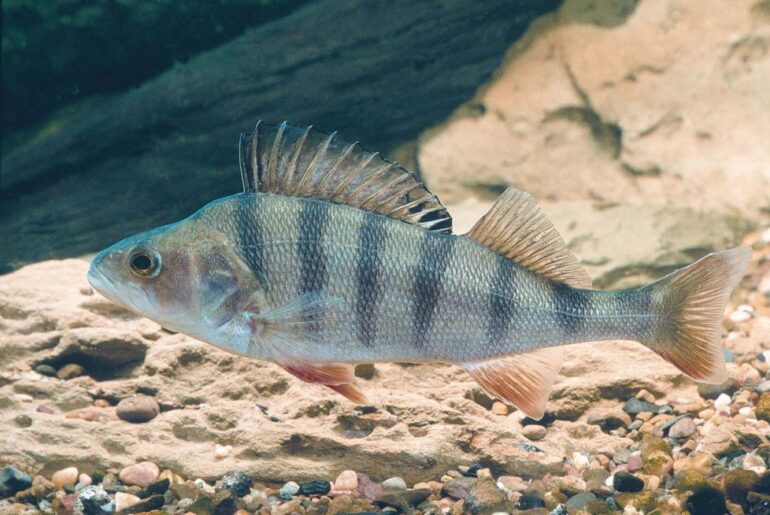Epizootic haematopoietic necrosis virus (EHNV) is a viral pathogen of international concern. The disease it causes is known to be carried by Redfin perch (Perca fluviatilis) and farmed Rainbow trout (Oncorhynchus mykiss), with outbreaks recorded since 1985. It was shown that EHNV can kill native freshwater fish species of high conservation value, including some that live in the MDB (the tests were conducted in laboratory tanks). Despite its significance, very little is known about the natural distribution of EHNV in Australia, or its impact on native fish, as no formal surveys have ever been conducted.

The objectives of this project were to identify the extent to which EHNV is a risk to native fish in the MDB, and to provide scientific knowledge to aid in the development of effective management policy.
The specific aims were to:
- to validate earlier findings of susceptibility of native fish to EHNV,
- to determine the susceptibility to infection by EHNV of a range of previously untested fish species found in the Basin,
- to investigate the epidemiology of EHNV in wild populations of priority fish species and,
- to develop a test to determine exposure of wild populations of priority fish species to EHNV.
Findings:
Based on testing 3622 tissues and 492 blood samples from fish it was concluded that EHNV is still present in the upper Murrumbidgee River catchment in the MDB. During the study two separate outbreaks of disease due to EHNV occurred in juvenile Redfin perch (at two locations) and a dead Redfin perch infected with EHNV was detected (at one of the locations of an outbreak). EHNV appeared to be absent from Redfin perch populations elsewhere in the MDB as there were no reports of disease outbreaks, and neither virus nor antibodies against the virus were detected.
EHNV appeared to be absent from other species of fish in the Murray-Darling Basin during the study period. Enough data were collected to be 95% confident that EHNV was present in <10% of the population of the following species: River blackfish (Gadopsis marmoratus), Brown trout (Salmo trutta), Mountain galaxias (Galaxias olidus), Murray cod (Maccullochella peelii), Silver perch (Bidyanus bidyanus), Southern pygmy-perch (Nannoperca australis), Rainbow trout, Redfin perch and Eastern gambusia (Gambusia holbrooki).
The susceptibility of Silver perch, Macquarie perch (Macquaria australasica) and Eastern gambusia to EHNV after exposure with water was confirmed. Two new susceptible species were identified: Murray-Darling rainbowfish and freshwater catfish. Species which became infected with EHNV following exposure via water, and in which some individuals survived and appeared to carry the live virus were Silver perch, Eastern mosquitofish, and Redfin perch. Species with resistance to EHNV following exposure via water were Murray cod, Golden perch (Macquaria ambigua ambigua), Un-specked hardyhead (Craterocephalus stercusmuscarum fulvus), Carp gudgeon (hypseleotris spp.), Southern purple-spotted gudgeon (Mogurnda adspersa), Trout cod (Maccullochella macquariensis) and Southern pygmy-perch.
Redfin perch generally were highly susceptible to EHNV, but there appeared to be differences in susceptibility between populations. Fish from Blowering Dam in the known endemic region appeared to have a greater degree of resistance than others.
A new blood test was developed during this project to detect antibody resulting from immune responses in fish against EHNV. A specific test was developed for Silver perch, Murray cod, Macquarie perch and Redfin perch, with results suggesting that the blood test has application in field surveys for EHNV.
Implications for native fish
The findings of this study reinforce a view that EHNV is a factor detrimental to native fish populations in the MDB. Policies to reduce the risk of exposure to the disease in the MBD are justifiable and necessary to protect native fish populations.
The blood test developed in this study is versatile and opens up a new range of options to study the health of fish in the MDB. It has application in a much wider range of species, and it can be adapted to detect antibodies against many other pathogens. An advantage of the blood test is that is can reveal past exposure of a population to EHNV.
Link to full report here – Susceptibility of previously untested basin fish species to Epizootic Haematopoietic Necrosis Virus (EHNV)



